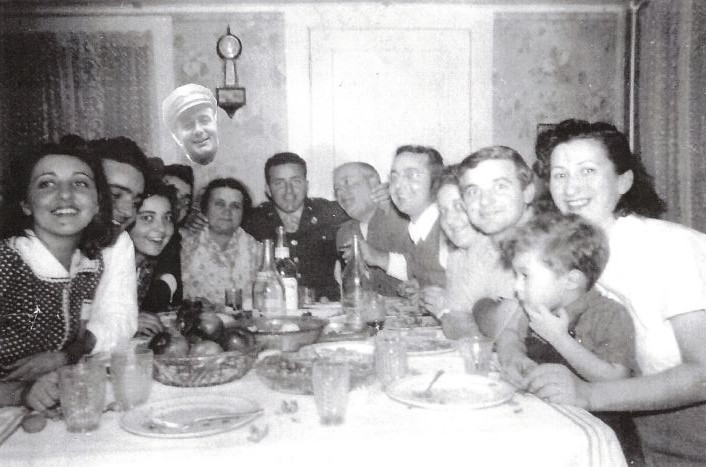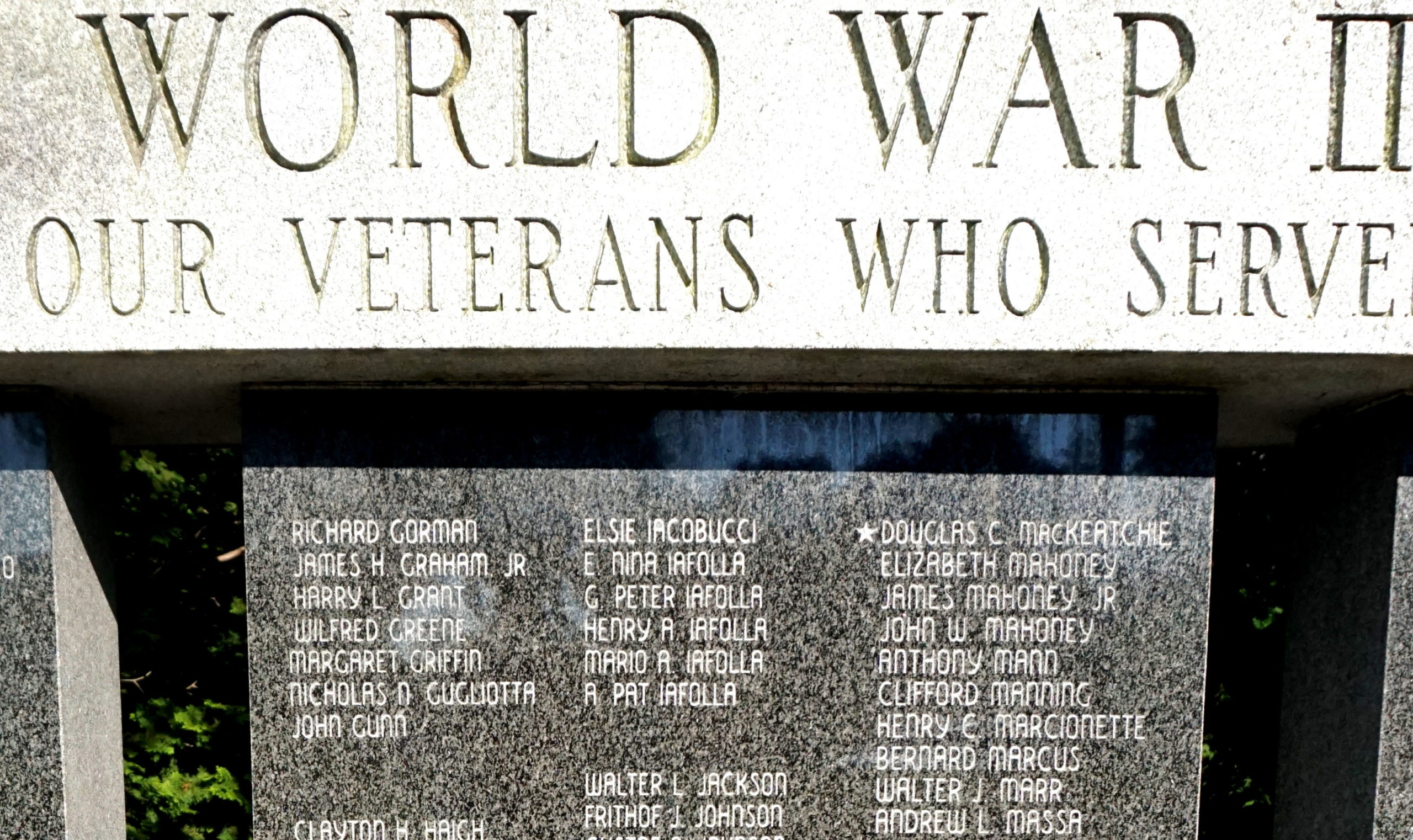Sept 1, 2022
In the last issue of The Portal, I wrote about the Palumbo family of Frairy Street. This month the focus is the Iafolla family on that street that was known as Little Italy.
In the 40 years between 1880 and 1920, some 40 million Italians emigrated to the United States.
Antonio Patrizio Iafolla, born on April 19,1883 in Villa Lago, Italy. His work life began at age 12 in 1895 when he worked as a mason and on a railroad in Rome. He emigrated to the United States in 1900 and worked few years in Pittsburgh, Pennsylvania as a coal miner and iron worker.
Antonio returned to Italy and worked for the military police. In 1906 in his hometown of Villa Lago, Antonio at the age of 23, fell in love with and married 19-year-old Caterina Gatta. Caterina had more formal education than Antonio, and she was very adept at reading and writing Italian. She also learned the domestic arts of cooking, knitting, and crocheting, which she enjoyed all her life.
In Italy and America, she was a homemaker and by hand cut wheat for bread. She also trained in domestics, for sewing, knitting and crocheting which she fulfilled all her life.
Antonio visited the United States in 1907 and again in 1910, at which point he decided to stay and seek his fortune in this land of opportunity. Antonio had spoken of the hard life in his homeland of Italy – was no running water, no facilities, hard work with no opportunity…where “we had rocks to eat.”
He recalled his earlier, younger years of poverty when he was able to catch pigeons with his friends, and they were happy to have the squab for dinner. Many years later his grandson Eric said Antonio had a garden at the back of their homestead at 34 Frairy Street, where he would shoot starlings that sometimes raided the garden’s vegetables.
He missed his friends and family and had the desire to return when he got older to be reunited with his relatives. But as time went by and he became more settled in America, his only desire was to correspond via mail with his sister that remained in Italy.
He greatly enjoyed getting together with friends and soon became a wine maker, entertaining friends on a Sunday afternoon and bringing his family to the opera. Enrico Caruso was his favorite singer.
Antonio saw America as the land of plenty…but also believed a land of wastefulness. He believed that here a man could really aspire to be president and that where America had everything beautiful, in Italy they only had “rocks to eat,” in a land with little to no variety, spontaneity, or gainful employment. His expectations were reasonable, and in the 1940s he considered trying to start a construction business with his sons. He wanted to buy real estate and invest money, but Caterina was not in favor of that due to the financial sacrifices that it all involved.
In 1913 Antonio and Caterina had their first child, a son named Ercole, who all his life was known as Curley. Curley was followed by nine more kids over the years. The family reunion photo at the dinner table was taken around 1945. It shows Tess, Nina (who became a Medfield police sergeant), Helen, Henry, Peter (insert), Caterina, Pat, Antonio, Curley, Paulina, Mario, Florence (holding young Eric in her lap).

A source of family pride is that five of those pictured – Nina, Peter, Henry, Mario, and Pat – all served in the armed forces in World War II, and they’re listed on the monument in Baxter Park! Pat’s son Frank served in the Marines and several times served as commander of the Beckwith Post American Legion.

From 1932 to 1936 Antonio worked on the construction of the new Christian Science Building on Huntington Avenue, and the Iafolla family moved to Boston’s North End. They rented their house at 34 Frairy Street to the Bombelli family.
According to family history, Pat and Curley were playing in a baseball game in the North End. There was a heated exchange when Pat, as the game umpire called a player from the opposing team out at third base. A fight broke out, and Curley grabbed the player, preventing him from hitting Pat. That player then went to get his gang, and they all returned to start fighting with Curley and Pat. However, the Iafollas were saved by an “infamous character” with a smoking cigar and a Cadillac. Fortunately, the Iafollas never had any more trouble with any North End gangs. Nor did they ever find out who the strange benefactor was. Apparently, it was Pat and Curley’s good fortune to have friends in high places.
During the depression of the 30s, different churches were giving out allocations of flour, sugar and other foods. Tess, Polly, Pat, and Tony would go to get the food donations at a local Catholic church. However, Grandma and Gramps were not in favor of receiving these free, surplus food items and decided to leave the North End and return to Medfield after four years.
My Memories of the Iafollas
I have known the Iafolla family since the 1950s. There are fond memories that include the same waterfall running today at Baker’s (Meetinghouse) Pond near Upham Road. The stream rushed along the rear of the houses located on the upper left side of Frairy Street. The current was especially strong as it arrived and sped past the back of Antonio’s house. If the summer day was especially hot, Antonio could be seen wading in the abundant stream that floated his graceful body. The crisp, cool rushing water was a luxury to this man who had learned to swim while growing up in Italy.
When you came upon Antonio all you had to do was smile and say hello. If wife, Caterina happened to see you, she would offer a slice of one the best Sicilian-style pizzas outside of Boston. If you tried the Sicilian-style pizza for the first time and liked it, you were sure to ask her for another piece the following day — which is exactly what this writer did!
When I was attending the Memorial Elementary School on Adams St. in Medfield, I warmly remember Curley Iafolla with his cheerful smile as the head custodian of the school. Curley was a joyful man, born of the happy gene. We all called him Curley, because that’s how the teachers introduced him to all of the young children.
Curley reported to the principals, either Mrs. Brown or in the latter part of the 50s decade to Mrs. Maude Washburn. Both were strict disciplinarians. Most of the kids remembered and told about the time when an irate Mrs. Brown broke a wooden pointer, as big as a yard stick, over the thick office table that was right outside her office. She wasn’t fooling around when it came to insisting the students behave!
I remember when Curley’s mom, Caterina, passed away in the late fifties and how he tearfully carried a large black and white photo of her in his hands next to his heart. His father, Antonio, told Curley that he would buy that photo and offered him the money to purchase the picture. But Curley wasn’t gonna budge and then broke down in tears without saying a word. Of course, that was such a sensitive time and unabashed display of tremendous emotion for Curley Iafolla.
When I was a senior in high school, I had a science fair project that involved the vitamin-C deficiency of guinea pigs. All of the guinea pigs were kept in the biology room of teacher, Mr. Steven Rudin, at the former Medfield High School on Pound Street. Feeding the animals was a daily process, but their cages had to be cleaned at least twice a week. At times the cage cleaning had to take place on the weekends when the school was closed. Curley Iafolla was forever accommodating, allowing me to enter the school from one of the side entrances in order to get that job done. Over the many years that I knew Curley, he was one of the most pleasant, amiable, energetic, and upstanding men I ever had the pleasure of knowing.
Over the years I’ve gotten to know his four sons. Eric is a tireless worker who has recently retired from his work at the Medfield Library. He has been of tremendous help in helping me navigate the family history of the Iafollas, going all the way back to the turn of the 20th century. Eric Iafolla and his cousin, Barry Palson, son of Polly Iafolla, were both valuable collaborators in filling in gaps and dates in preparing this family history.
Bobby Iafolla worked hard too and went to Medfield High School, where he played on the Medfield High School football team that went through some lean times in the late 50s and early 60s when the wins were few and far between – but the spirit was high that helped to culminate in the winning championship teams of the middle sixties. Bobby advocated naturalism and clean energy long before that lifestyle was in vogue. A member of the Woodstock generation, Bobby would often be seen riding his bicycle around Medfield before he moved to Millis.
Richard Iafolla became an avid equestrian, not especially riding either English or Western style but in the care and management of horses and their stable in and around the town of Dover.
Peter Iafolla played halfback when the Medfield High football team celebrated the 1964 undefeated championship season of nine wins with no losses. In junior high school, Peter was also a very talented gymnast. He has been an exemplary employee at the Medfield Water Treatment Plant in what has been a very good and lengthy career.
At mid-century, we treasured the times when neighborhood teens walked along Frairy Street, while one could hear the music coming from their small transistor radios, playing the songs of early rock and roll artists, songs like Mickey’s Monkey, Hurts So Bad, and Love Me Tender. Together, all those teenagers would sing along in harmony to those hit records.
Memories of the 1950s evoke good fortune, when life seemed simpler, when children wound their tire swings good and taut in order to unravel quick enough to make them happily delirious and dizzy. These were days when young and curious kids bottled black and yellow garden spiders and brought them to science class so they could feed grasshoppers to them. Those underlying rhythms of nature are as resilient as the waterfall, and the swift running stream that buoys the floating body. All together they are sounding to instill pride in a people who are forever trying to preserve their heritage, a state of mind and the streets they lived on.